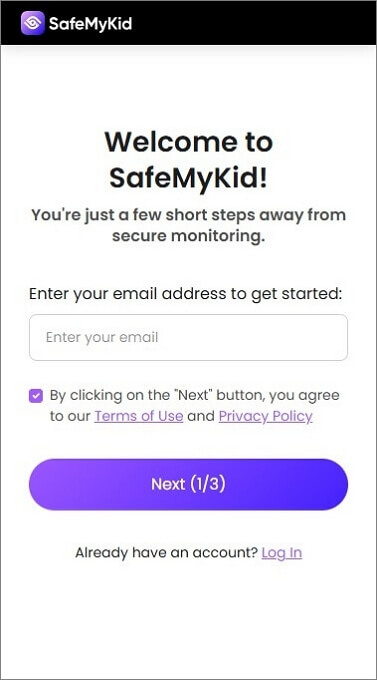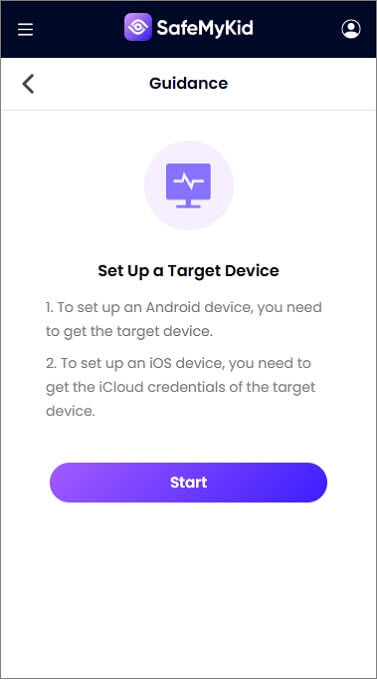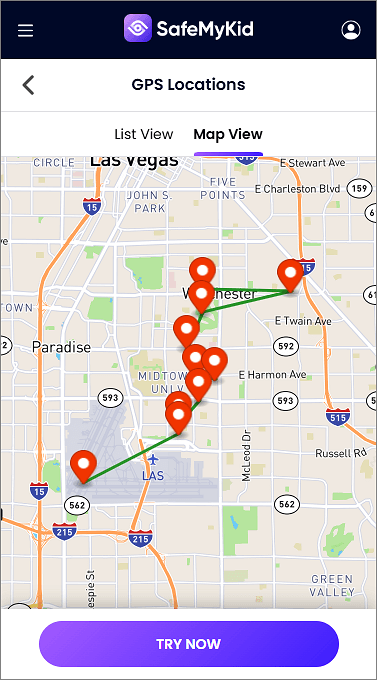Tracking Another Phone: 5 Proven Ways to Stay Informed and Secure

The need for tracking another phone has become increasingly common as parents strive to ensure their children's safety in the digital age, families coordinate care for elderly relatives, and individuals manage multiple devices across work and personal life.
![]()
With proper authorization and the right approach, tracking another phone can serve crucial purposes, including child protection from online predators, emergency location assistance for vulnerable family members, and device recovery after theft or loss.
SafeMyKid - The Most Comprehensive Solution for Tracking Another Phone

When evaluating solutions for tracking another phone legally and effectively, SafeMyKid stands out as the premier monitoring platform for families and organizations with legitimate oversight needs.
SafeMyKid provides unparalleled tracking capabilities through advanced technology that combines GPS precision, Wi-Fi positioning, and cellular triangulation to maintain accurate location awareness across Android and iOS devices.
Its sophisticated features extend far beyond basic location tracking to include geofencing alerts, movement history, real-time tracking, and comprehensive activity monitoring, creating complete oversight documentation for authorized users.
Key Features of SafeMyKid for Tracking Another Phone
When determining what makes SafeMyKid the optimal solution for tracking another phone, several distinctive capabilities set it apart:
Precision Location Tracking - Combines multiple positioning technologies to provide accurate location data within 5-10 meters, updating every few seconds during active monitoring sessions.
Intelligent Geofencing System - Create unlimited virtual boundaries around schools, homes, or danger zones with instant alerts when tracking another phone that enters or exits designated areas.
Comprehensive Movement History - Access detailed location timelines showing everywhere the tracked phone has been with timestamps, addresses, and route visualization for pattern analysis.
Stealth Mode Operation - Operates invisibly on the tracked device without notifications, icons, or battery drain indicators that might alert the phone user to monitoring activities.
How to Start Tracking Another Phone with SafeMyKid
Configuring SafeMyKid for tracking another phone requires just a few simple steps:
Step 1.Create Your SafeMyKid Account
Visit the SafeMyKid website to register and establish your secure tracking dashboard.

Step 2.Configure The Target Device
For iPhones: You can set up tracking by logging in with the device's iCloud credentials. No physical app installation is required.
For Android Devices: You'll need to download and install the SafeMyKid app directly on the device you want to track (with proper authorization).

Step 3.Access The Complete Phone Tracking Dashboard
Log in to your dashboard to begin tracking another phone in real-time with full access to location history and alert configurations.

Once properly configured, SafeMyKid provides continuous location tracking with comprehensive monitoring features, delivering the detailed oversight needed for legitimate family safety purposes.
4 Alternative Methods for Tracking Another Phone (with Limitations)
When investigating options for tracking another phone legally, several approaches provide varying levels of functionality and accessibility. Understanding these methods helps select the most appropriate solution for your specific needs.
1. Built-in Phone Tracking Features
![]()
Major operating systems include native options for tracking another phone within family groups or device ecosystems, providing basic location services without additional software.
Built-in tracking options include:
- Find My iPhone for Apple devices
- Find My Device for Android phones
- Family Sharing location features
- Samsung SmartThings Find
- Google Maps location sharing
To implement built-in tracking:
- Enable location services on both devices
- Set up family sharing or device groups
- Grant location permissions between devices
- Access tracking through native apps
- Configure notification preferences
This method works well for basic tracking of another phone within families already using the same ecosystem, providing free location access with minimal setup requirements.
The primary limitation is basic functionality compared to dedicated tracking apps, with limited history, no advanced features, and a dependency on users not disabling sharing.
Limitations of Built-in Phone Tracking Features:
- Shows only recent or live location, not full history
- Doesn't offer advanced tools like app tracking or alerts
- Can be turned off easily by the person being tracked
- Works best only if both phones use the same system (like both Android or both iPhone)
- Not hidden——a person may know they're being tracked
2. Carrier Family Tracking Services
Mobile carriers offer family safety features for tracking another phone on the same account, providing network-based location services with parental controls.
Carrier tracking services include:
- Verizon Smart Family tracking
- AT&T Secure Family location
- T-Mobile FamilyWhere monitoring
- Sprint Safe & Found tracking
- Premium add-on features
To activate carrier tracking:
- Log in to the primary account holder portal
- Add a family tracking service to plan
- Configure tracked phone numbers
- Download companion apps if required
- Set up alerts and boundaries
This approach leverages cellular network infrastructure when tracking another phone, ensuring functionality even when GPS is disabled, with carrier-level reliability and support.
The primary drawback is additional monthly fees and limited features compared to dedicated tracking apps, plus restrictions to phones on the same carrier account.
Limitations of Carrier Tracking Services:
- Extra monthly charges apply for most features
- Only works for phones on the same carrier account
- Fewer features than advanced tracking apps
- It may not work well when the phone is out of the network
- Limited compatibility with different devices or brands
3. GPS Tracking Devices
![]()
Physical GPS trackers provide alternative methods for tracking another phone by attaching dedicated hardware that operates independently of the phone software.
GPS device options include:
- Bluetooth tile trackers
- Magnetic GPS units
- Battery-powered trackers
- Vehicle-based systems
- Wearable GPS devices
To use GPS devices:
- Select the appropriate tracker type
- Attach to a phone case or carry items
- Activate the device and service plan
- Configure tracking intervals
- Monitor through dedicated apps
This approach ensures tracking another phone continues even if the software is disabled, providing hardware-based redundancy for critical tracking needs.
The primary limitations include additional hardware costs, separate battery management, and potential discovery of physical devices.
Limitations of GPS Tracking Devices:
- Extra cost for the device and service plan
- Requires separate charging or battery replacement
- Devices can be noticed or removed by the person being tracked
- Limited features compared to phone-based apps
- Some trackers may have delayed updates or signal issues indoors
4. Network-Based Tracking Methods
Advanced users can implement network-level tracking of another phone through router configurations, Wi-Fi monitoring, or home automation systems.
Network tracking includes:
- Router connection logging
- Wi-Fi presence detection
- Smart home integration
- Bluetooth beacon systems
- Local network monitoring
Network tracking setup:
- Configure the router for device tracking
- Set up presence detection rules
- Integrate with home automation
- Create arrival/departure alerts
- Monitor through network dashboards
This sophisticated approach to tracking another phone works well for home-based monitoring, providing automatic detection when devices enter or leave the network range.
The primary advantage is passive operation without phone configuration, though limited to specific location coverage areas.
Limitations of Network-Based Tracking Methods:
- Only works within the Wi-Fi or home network range
- Can't track when the phone is outside or on mobile data
- Setup can be technical and hard for non-experts
- Doesn't provide real-time GPS or detailed location info
- May require advanced router settings or smart home systems
Best Practices for Responsible Tracking Another Phone
Implementing ethical guidelines ensures that tracking another phone serves legitimate purposes while maintaining trust and legal compliance.
Always obtain explicit consent before tracking another phone, except for minor children, where parental authority applies. Document your authorization and reasons for tracking to ensure legal compliance. Focus monitoring on specific safety concerns rather than general surveillance when tracking another phone for family protection.
Configure appropriate boundaries that respect privacy while achieving safety goals. Use geofencing for important locations rather than constant monitoring. Set up emergency alerts while avoiding excessive notifications that create anxiety or resentment about tracking another phone.
Regularly review whether continued tracking remains necessary as situations change. Adjust monitoring levels based on age, maturity, and demonstrated responsibility. Maintain open communication about tracking purposes and findings when appropriate.
Common Challenges When Tracking Another Phone
![]()
Understanding typical obstacles helps set realistic expectations when learning about tracking another phone for legitimate family safety and device management needs.
Technical challenges include operating system restrictions that limit tracking capabilities, especially on iOS devices, requiring specific workarounds for comprehensive monitoring.
GPS accuracy varies in different environments, while battery optimization features may disable tracking to conserve power. Network connectivity issues can interrupt real-time location updates when tracking another phone remotely.
Legal and privacy challenges involve obtaining proper consent before tracking, understanding jurisdiction-specific laws about monitoring, and managing family dynamics around privacy expectations.
Platform fragmentation means tracking another phone works differently across Android versions, iOS updates, and various device manufacturers.
Practical challenges encompass maintaining tracking functionality through system updates, managing multiple devices from a single dashboard, and balancing monitoring needs with device performance.
Common Misconceptions about Tracking Another Phone
Several persistent myths about tracking another phone can lead to unrealistic expectations or legal problems for those seeking monitoring solutions.
Many believe tracking another phone is impossible without physical access, yet cloud-based solutions and family features enable remote setup. The misconception that tracking is always illegal ignores legitimate uses like parental monitoring and consensual tracking between partners.
Similarly, the belief that airplane mode prevents all tracking fails to consider that some apps can access cached location data. Some assume free apps provide the same capabilities as premium solutions when tracking another phone, overlooking significant feature and reliability differences.
Another dangerous myth suggests tracking another phone leaves no trace, when most devices can display location sharing status or app installations. Understanding these misconceptions helps approach phone tracking with realistic expectations and proper authorization.
Frequently Asked Questions about Tracking Another Phone
Understanding these common questions helps implement phone tracking solutions effectively and legally:
1. Is tracking another phone legal?
Tracking another phone is legal when you have proper authorization: parents can track minor children, employers can track company-owned devices with policy disclosure, and adults can track their own devices or those of consenting partners. Always verify local laws as regulations vary by jurisdiction, and unauthorized tracking may result in serious legal consequences.
2. Can I track another phone without installing anything?
Limited tracking is possible through built-in features like Find My iPhone or Google's Find My Device if you have account credentials. However, comprehensive tracking of another phone typically requires app installation or configuration. Cloud-based solutions for iPhone can provide some functionality without physical installation using iCloud credentials.
3. How accurate is tracking another phone?
Accuracy depends on available technologies and the environment. GPS tracking provides 5-10 meter accuracy outdoors, while indoor tracking using Wi-Fi achieves 10-40 meter precision. Cell tower tracking offers 100-3000 meter accuracy based on tower density. Most modern apps combine methods for optimal accuracy when tracking another phone.
4. Will the phone owner know they're being tracked?
Professional tracking apps like SafeMyKid operate in stealth mode without visible indicators. However, built-in features like Find My iPhone or location sharing show tracking status. Battery usage, data consumption, or system settings might reveal tracking to technically savvy users examining their device closely.
5. Does tracking another phone use lot of data?
Data usage is minimal for basic location tracking, typically using 1-5 MB per day for periodic updates. Continuous real-time tracking or features like live video streaming consume more data. Most tracking apps optimize data usage by sending compressed location packets and updating based on movement rather than constant transmission.
6. Can I track another phone that's turned off?
No active tracking occurs when a phone is completely powered off. However, you can view the last known location before shutdown, and tracking resumes automatically when the device powers on. Some advanced tracking apps can trigger alerts when a tracked phone turns off or loses connection.
Conclusion
Tracking another phone has evolved from a technical challenge to an accessible solution for legitimate safety and management needs.
Modern tracking methods range from built-in operating system features to sophisticated apps like SafeMyKid that combine multiple technologies for comprehensive monitoring.
